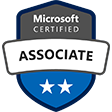Course Overview:
The focus of this course is managing Red Hat OpenStack Platform using the unified command-line interface, managing instances, and maintaining an enterprise deployment of OpenStack. This course also teaches the management and customization of an enterprise deployment of OpenStack (overcloud) and how to manage compute nodes with Red Hat OpenStack Platform director (undercloud).
Attendees to CL-345: Red Hat OpenStack Administration II will receive TechNow approved course materials and expert instruction.
Dates/Locations:
No Events
Duration: 5 Days
Prerequisites:
This course is intended for Linux system administrators, cloud administrators, cloud operators, and infrastructure architects interested in, or responsible for, maintaining a private or hybrid cloud.
Prerequisites for this course is Red Hat Certified System Administrator (RHCSA), or demonstrate equivalent experience.
Attend Red Hat OpenStack Administration I: Core Operations for Cloud Operators (CL115), or demonstrate equivalent experience
Course Outline:
- Navigate the Red Hat OpenStack Platform architecture
- Describe the OpenStack control plane
- Integrate Identity Management
- Perform image operations
- Manage storage
- Manage OpenStack networking
- Manage compute resources
- Automate could applications
- Troubleshoot OpenStack operations
- Comprehensive review
Comments
Latest comments from students
Liked the class? Then let everyone know!
TechNow offers many courses that also have a related certification exam. As an Authorized Peason VUE testing center, we offer exams for many certifications. Pearson VUE offers exams for a wide array of certifications that includes the IT certs of Cisco, EC-Council, CompTIA, and SANS.

Course Overview:
Learn how a Modern Desktop Administrators deploys, configures, secures, manage, and monitors devices and client applications in an enterprise environment. This is a hands-on, instructor led Bootcamp focusing on the real world responsibilities of a Modern Desktop Administrator and covering the information needed for the certification exams, which are administered while attending.
If you’ve passed Exam 70-698: Configuring Windows 10 (retired March 31, 2019) you only need to take MD-101 to earn this new certification.
This certification is one of the workload administrator certification required for the Microsoft 365 Certified: Enterprise Administrator Expert certification.
Dates/Locations:
No Events
Duration: 10 Days
Course Content:
-
- Module 01. Installing Windows
- Module 02. Updating Windows
- Module 03. Post-Installation Configuration and Personalization
- Module 04. Configuring Peripherals and Drivers
- Module 05. Configuring Networks
- Module 06. Configuring Storage
- Module 07. Managing Apps in Windows 10
- Module 08. Configuring Authorization & Authentication
- Module 09. Configuring Data Access and Usage
- Module 10. Configuring Advanced Management Tools
- Module 11. Supporting the Windows 10 Environment
- Module 12. Troubleshooting the Windows OS
- Module 13. Troubleshooting Files & Applications
- Module 14. Troubleshooting Hardware and Drivers
- Module 15. Planning an Operating System Deployment Strategy
- Module 16. Implementing Windows 10
- Module 17. Managing Updates for Windows 10
- Module 18. Device Enrollment
- Module 19. Configuring Profiles
- Module 20. Application Management
- Module 21. Managing Authentication in Azure AD
- Module 22. Managing Devices and Device Policies
- Module 23. Managing Security
Prerequisites:
-
-
- Microsoft 365 Certified Fundamentals (M-MS900)
Target Audience:
IT professionals who perform installation, configuration, general local management and maintenance of Windows 10 core services. Candidates may also be familiar with enterprise scenarios and cloud-integrated services.
Comments
Latest comments from students
Liked the class? Then let everyone know!
TechNow has heard many students talk about virtualized/remote training that TechNow Does Not Do. While training our most recent offering of PA-215: Palo Alto Networks Firewall Essentials FastTrack a student told his story of how he endend up in our course. His story we have heard for other technologies like Cisco, VMware, BlueCoat and other products.
A large percentage of training is moving to the virtualized/remote lab environments. Students are asked to use some variant of remote access software and remote into the training company's lab environment. Our student in our Palo Alto Networks Firewall course informed us that he went to a very costly offering of that course from the vendor and was not able to perform any labs. There were either network connectivity issues, or issues with the remote access software, or other problems. The whole training experience was very frustrating and not productive.
We keep our labs open to students if they would like after hours, or before hours access. Repeatedly going through a lab engrains that knowledge for later recall. Touching hardware is so critical in understanding the problems that arise when a cable comes loose, or a cable gets plugged in the wrong port. There are other scenarios such as just pulling the power cable, or turning off a power strip, or accidently overwriting a configuration. These disaster scenarious requires hands-on physical access to hardware. Preventing and recovering from disasters is what it's all about, and that requires hands-on, instructor led, real hardware.
